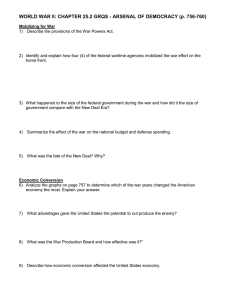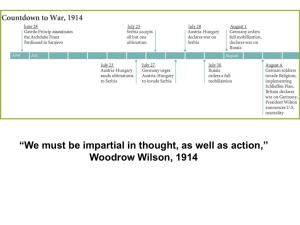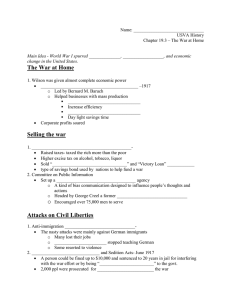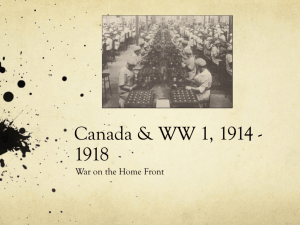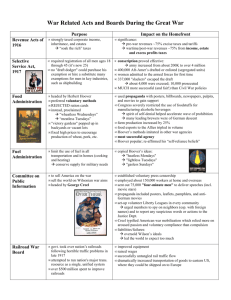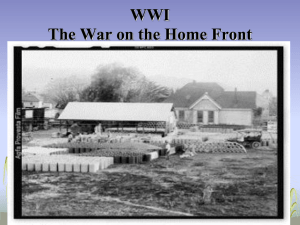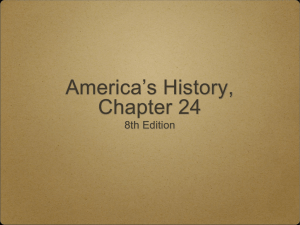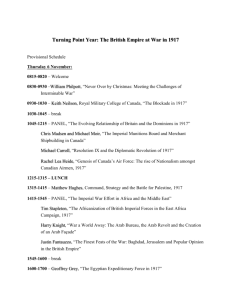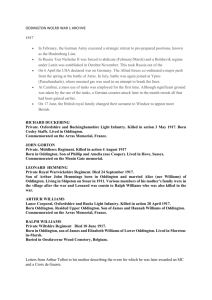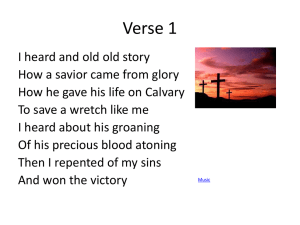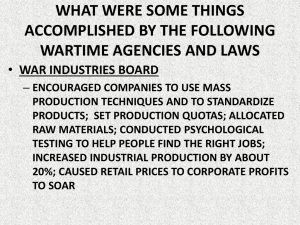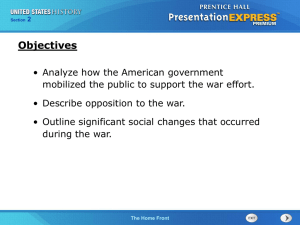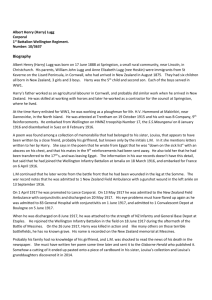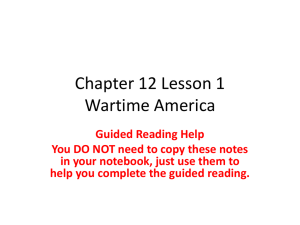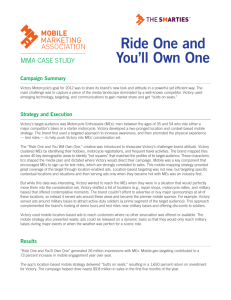Chapter 12 Section 3 Notes
advertisement
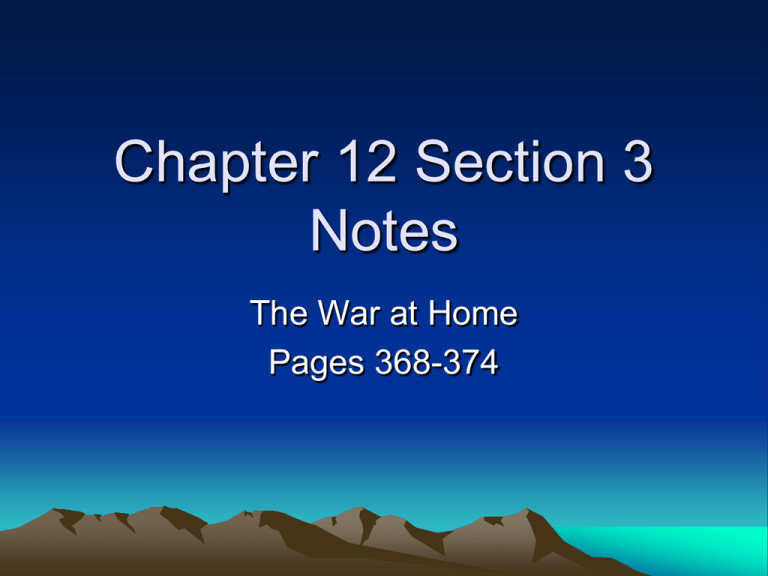
Chapter 12 Section 3 Notes The War at Home Pages 368-374 Mobilizing the Nation • Government set up programs to – Finance the War – Conserve Scarce Resources – Redirect Industry and Labor toward Wartime production – Mobilize support through propaganda Directing the Economy • William McAdoo Sec. of Treasury – Raise money to pay for the war • Cost $35 billion including loans to Allies • Issued 4 Liberty Bonds and Victory Bond drives Increased taxes • Increased taxes on Business and Personal incomes in October 1917 • Raised $10 billion War Boards • Established war boards which coordinated government, business, and industry • Sweeping power without complete control • Set prices • Set production levels • Regulated crucial businesses Conserving Resources • Food Administration – Headed by Herbert Hoover • Regulate the production and supply of food – Encourage increased agricultural production • To stimulate production guaranteed high prices • 921 million bushels produced in 1919 • Conserve existing food supplies – Wheatless days and meatless days – Plant “victory gardens” Fuel Administration • Harry Garfield– son of James Garfield former president • Heatless Monday’s • When coal ran short in 1918 closed factories east of Mississippi for several days Organizing Industry • Railroad Administration – William McAdoo leader • Reorganized railroads with limits on transportation rates and workers wages War Industries Board (WIB) • Led by Bernard Baruch – Responsible for • Allocating scarce materials • Establishing production priorities • Setting prices – Preferred to get owners to cooperate but threat of takeover when necessary • Some thought government intervention would damage free enterprise system but changed minds when profits soared Mobilizing Workers • Organized Labor –Because of draft and slower immigration workforce decreases • Industry has a shortage of labor –Unions take advantage of situation • 4500 strikes involving 1 million workers in 1917 alone National War Labor Board (NWLB) • Forms in April 1918 • Arbitrates disputes between workers and employers • 1200 cases heard– usually rule in favor of union • Because of success of unions membership in AFL grows to 3.2 million in 1919 Labor Shortage • Strengthened unions and brought changes in workforce • Number of women in workforce grows by 6% to 1.5 million during war Wartime Mobilization • Carrie Chapman Catt– headed Women’s Committee of the Council of National Defense • Harriet Stanton Blatch– headed Food Administration Speakers Bureau • Womens efforts in wartime helped secure passage of 19th Amendment– gave them the right to vote • Wilson supports passage in recognition of their efforts Volunteerism • Americans voluntarily – Conserved energy – Recycled essential materials – Planted “Victory Gardens” – Purchased Liberty and Victory Bonds Juliette Gordon Low • Founded Girl Scouts of America in 1915 • Grew from 500 girls in 1915 to 168,000 in 1927 Great Trek North • Mexicans were fleeing Revolution in Mexico in the late 1910’s • Also were workers in Southwest U.S. • 150,000 migrated north to U.S. during the war Great Migration • Southern Blacks moved north to work in industrial jobs • Fleeing discrimination and poor living conditions in the South • Better standard of living • Racial violence still a problem • July 2, 1917 East St. Louis– white rioters kill at least 39 blacks Influencing Attitudes • Committee on Public Information (CPI) • Formed in Spring of 1917 and led by George Creel
